Thermochromic Yarn
by N.Tari
Dena Molnar and Nicole Tariverdian:
Thermochromic paint and pigments have the ability to change color when heated. For this first project we decided to experiment with dying yarns with Thermochromic pigments. Originally we thought we might have to boil the pigments to create the dye. This was concerning since boiling the pigments could potentially desensitize or denature the pigments causing a lose of their reaction to heat. After a little research we found a dye recipe that used vinegar to set the color (similar to how easter eggs are dyed. You can find the recipe here. While using this recipe worked, there were aspects of the solution that require further research for permanent thermochromic/ and or dyed applications. We discuss this in detail under Chemical/ Material Notes.
Our intent was to create the yarn and apply it in different functions including knitting and weaving. We hoped to control the color and patterns though blending the thrmochromic yarn with a conductive yarn. Once woven or knit together an electrical current is run though the swatch heating it and changing the colors in isolated areas.
Process:
Dyeing:
Using the thermochromic paints in the lab as well as Dena’s personal supply, we dyed three different yarns; one multi colored, one pink and one yellow. After dyeing the the yarn we left it to dry for a few days. Even after several days the wool retained moisture. To dry the yarn we used a hair dryer. During the drying process, the yarns changed colors, which was exciting to see.
Knitting:
Once the yarn was completely dried we began to wind it and ply it with conductive stainless steal yarn to prepare for knitting. We wanted to knit one sample with the stainless steel plied with the thermochromic yarn and one using a pick on pick technique. We encountered several issues with the knitting machine and the stainless steel yarn making this process much more complicated then we initially hypothesized. The stainless yarn is not easy to work with on the knitting machine, as it snags and kinks and eventually breaks. When using it with the machine you have to go slowly and be carful of any snagging.
Our initial sample was created by knitting with he multi colored yarn in conjunction with conductive yarn, run though at the same time on the knitting machine. The second sample we created consists of the thermochromic yarn plied (using a drop spindle) with the stainless steel. We tested both swatches and observed the patterns created when hooked up the the power supply. After testing each we decided to felt the second swatch. Once felted we observed that the die during felting either washed out or became less sensitive.
Obervations:
Using a 12V Adaptor, we observed a complete surface color transformation on the knit that just used wool and steel yarns knitting together (These were not plied beforehand; they were simply fed into the knitting machine at the same time). We noticed a more random surface change on the knit that used a plied steel/wool yarn knitting with a cotton. This may be due to the cotton breaking up areas of conductivity.
Applications:
While knit constructions call to apparel applications, we are interested in instances where the conductive yarn has the potential to influence the thermochromic yarn, and not the (just) the heat of one’s body.
Taken into the knit or woven realm, we could see this applied to interior applications such as upholstery, and wall or window applications . The conductive yarn could be actuated with the use of a micro controller uploaded with information regarding external conditions, such as weather. Changes in weather , for example,could activate changes in the color and surface pattern of the textile revealing a secondary pattern that corresponds to the outside data .
Chemical/Material Notes:
There are a few aspects of the chemicals, materials and dying process that would benefit from further explanation and investigation if you plan on trying this yourself.
Thermochromic pigments- The pigments we used, were in deed “pigments”, not dyes, (the most well known Thermochromic dye is Leuco dyes) and we there fore had to make a solution to dye our wool skeins. This process, was, in reality a hybrid of standard processes for dying different types of yarns.
Direct , Acid, and Disperse dying
Direct Dyes- A class of dyes largely used for dyeing cellulosic (as opposed to protein or synthetic) fibers, are water soluble and can be applied directly to the fiber from an aqueous solution. The term may also be applied to dyeing without the use of mordants to fix the dye once it is applied. Direct dying often require boiling the yarn in a dye bath.
Acid Dyes- Are a class of dyes most commonly used for dying wool or protein fibers. Acid dyes are thought to fix to fibers by hydrogen bonding, Van der Waals forces and ionic bonding. They are normally sold as the sodium salt therefore they are in solution anionic. Protein fibers and synthetic Nylon fibers contain many “cationic” sites therefore there is an attraction of anionic dye molecule to a cationic site on the fiber. The strength of this bond is related to the desire/ chemistry of the dye to remain dissolved in water over fixation to the fiber.
Disperse Dyes- Used most often in the dying of Synthetic fibers.
Things to try- We essentially used a direct dying solution, omitted part of the process (boiling), and on a Protein (wool) fiber, which is a possible reason for the dye washing out during felting (if not caused by exhaustion of the thermochromic properties of the pigment). Below is a list of suggestions for further investigation.
- Locating the original Leuco dyes or researching if there is a safe “acid dye solution” that one could add thermochromic pigment to.
- Boiling the undyed wool yarn to open up the fiber and remove additional oils prior to pouring the thermochromic pigment/solution on may help the wool to accept the dye.
-Using the thermochromic pigment/solution on a cellulosic yarn instead of a protein. In this case, the material is probably more compatible with the process we used.
- ProChem is a fantastic dye resource, located in MA, which may have primers available to help fibers accept dyes and pigments, as well as an extensive range of dyes discussed above. http://www.prochemicalanddye.com
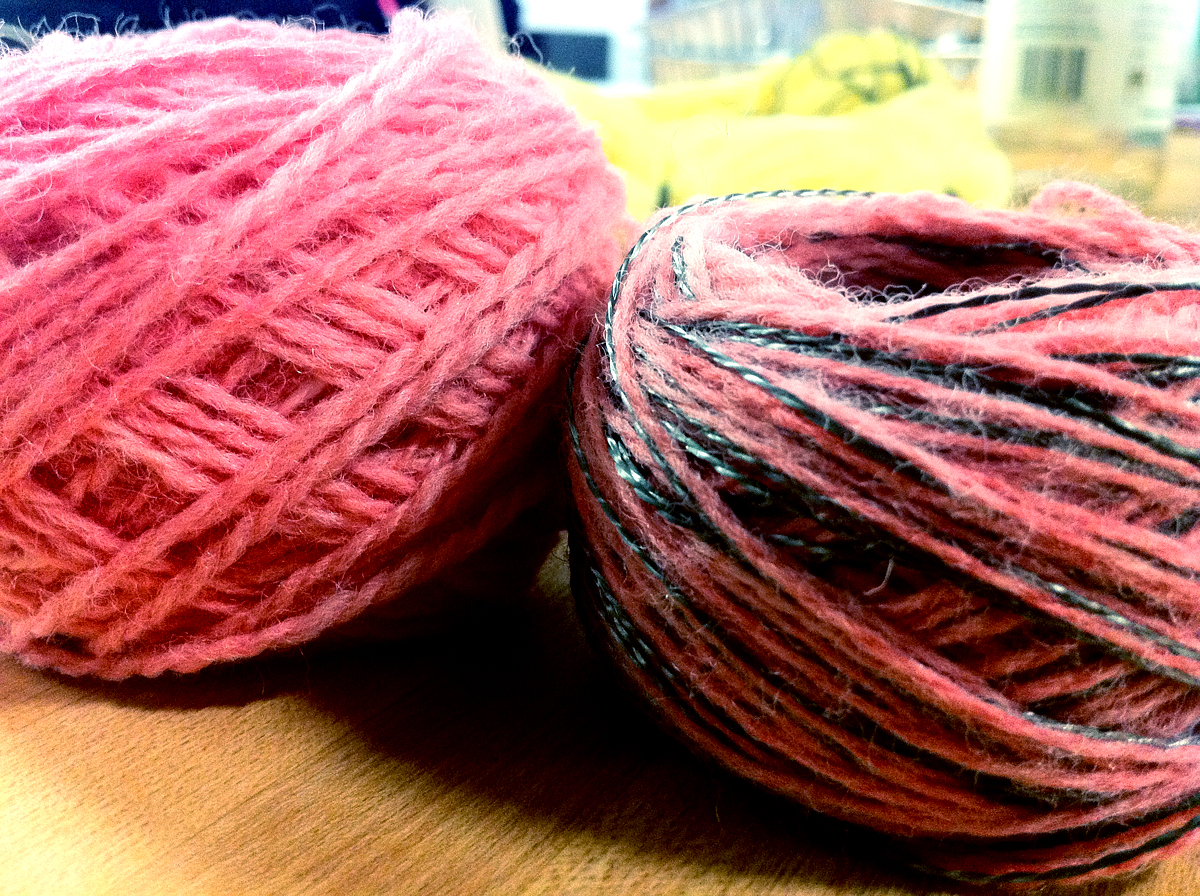
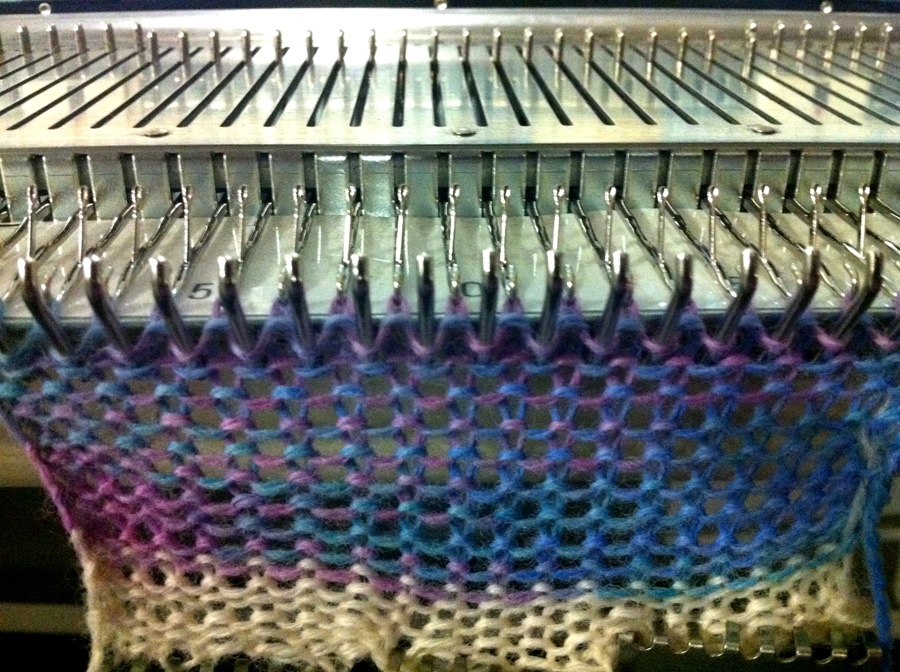
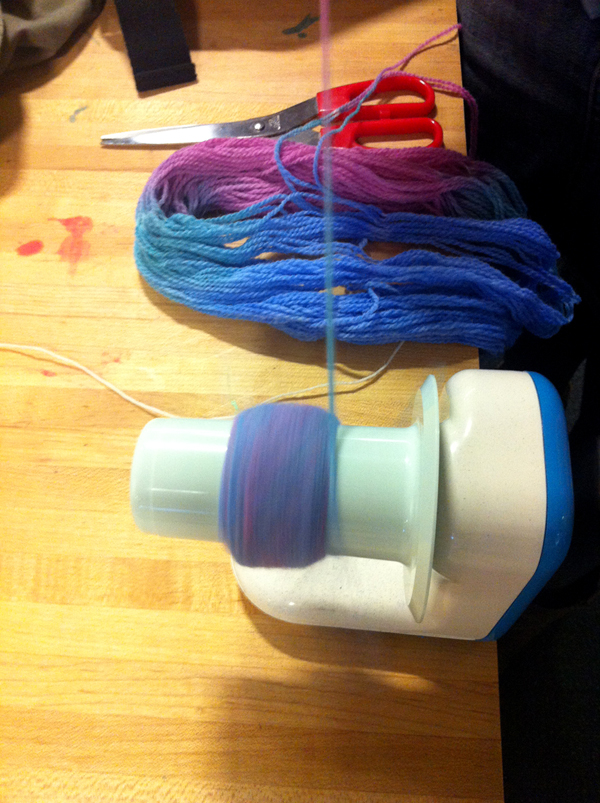
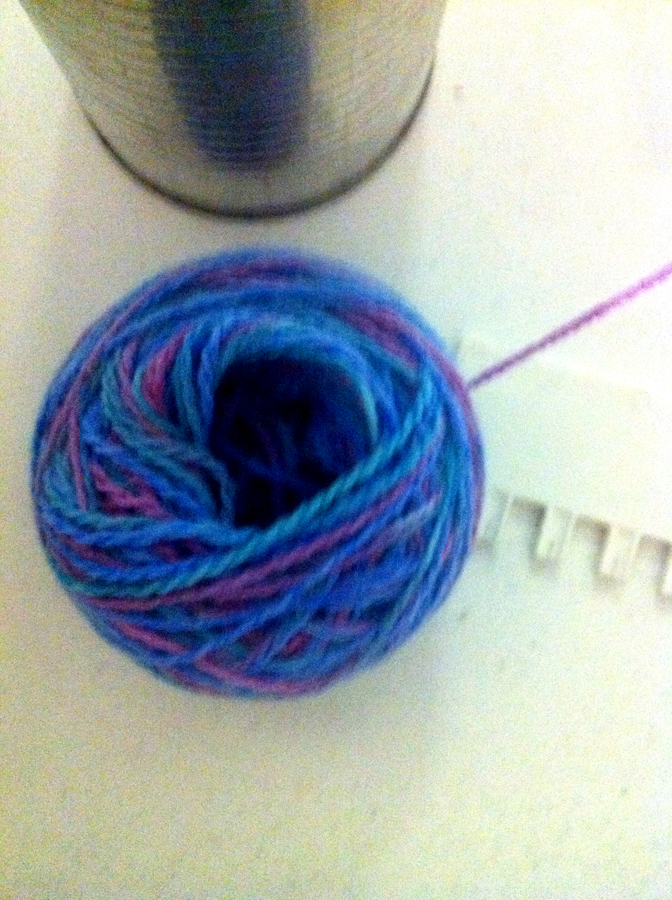
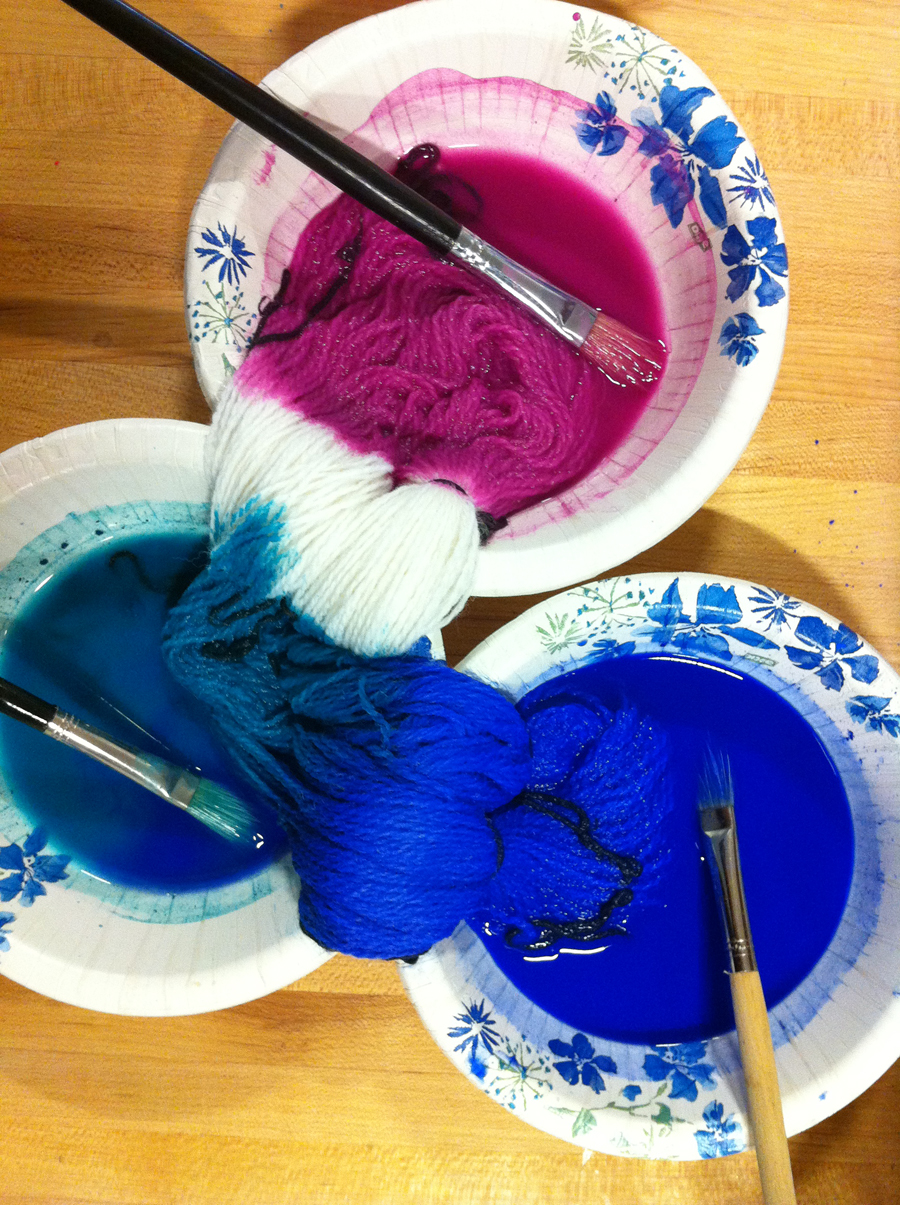
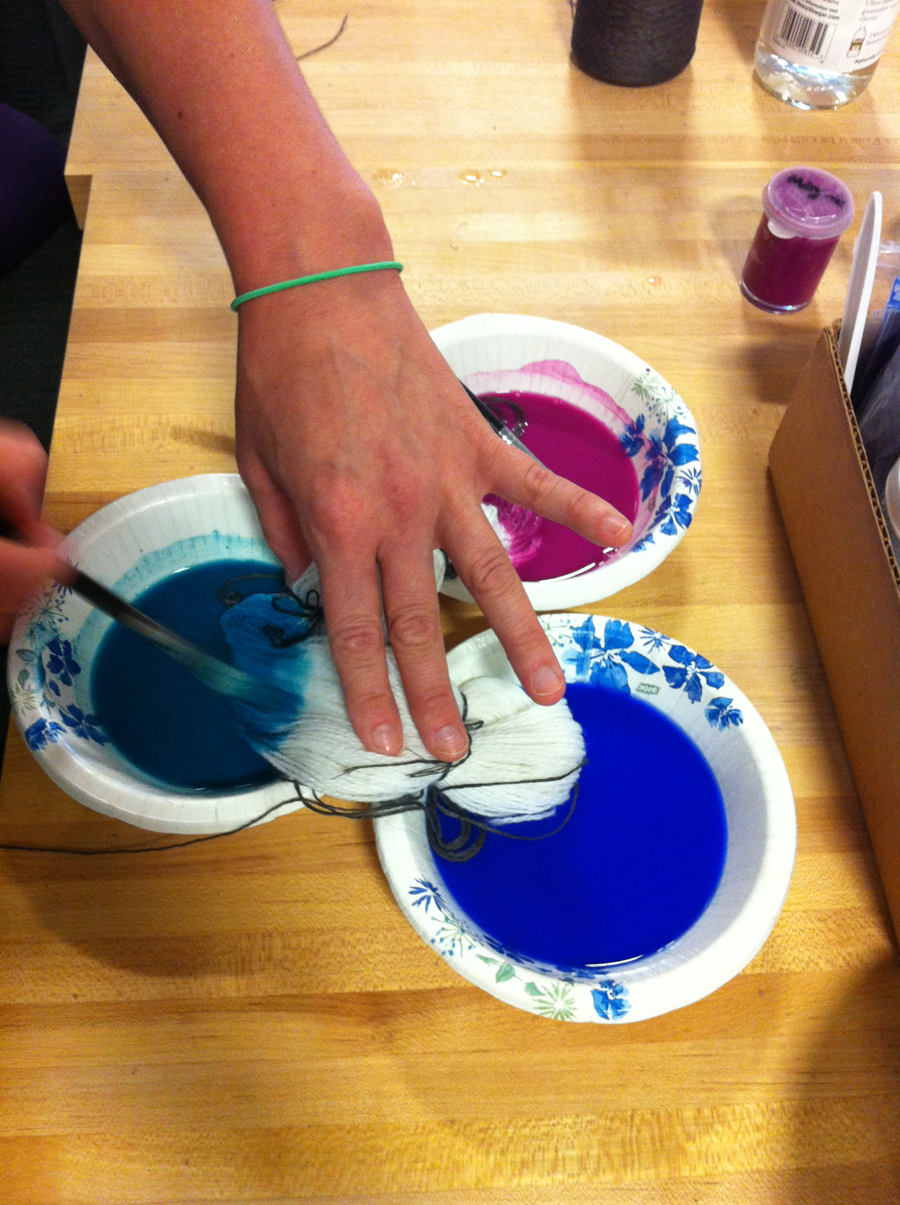
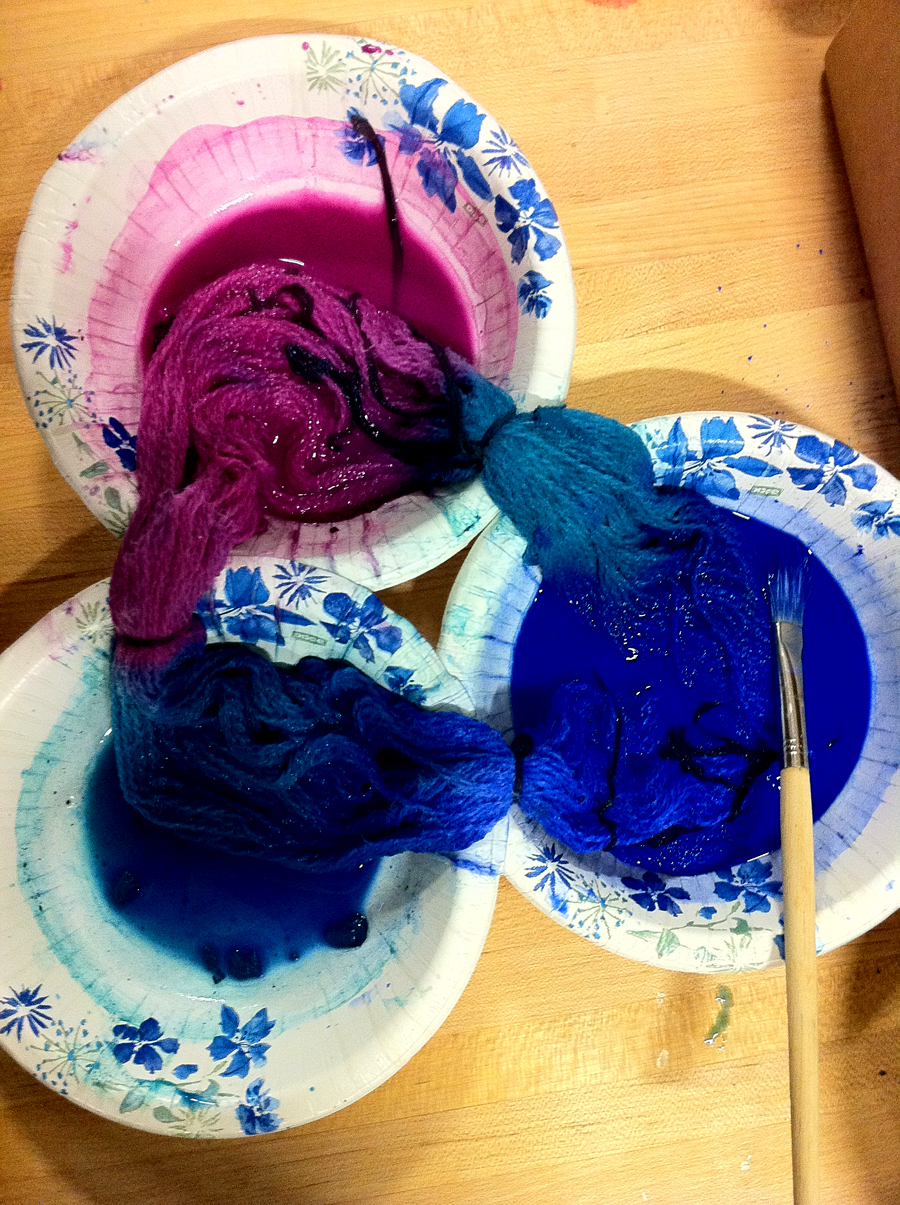
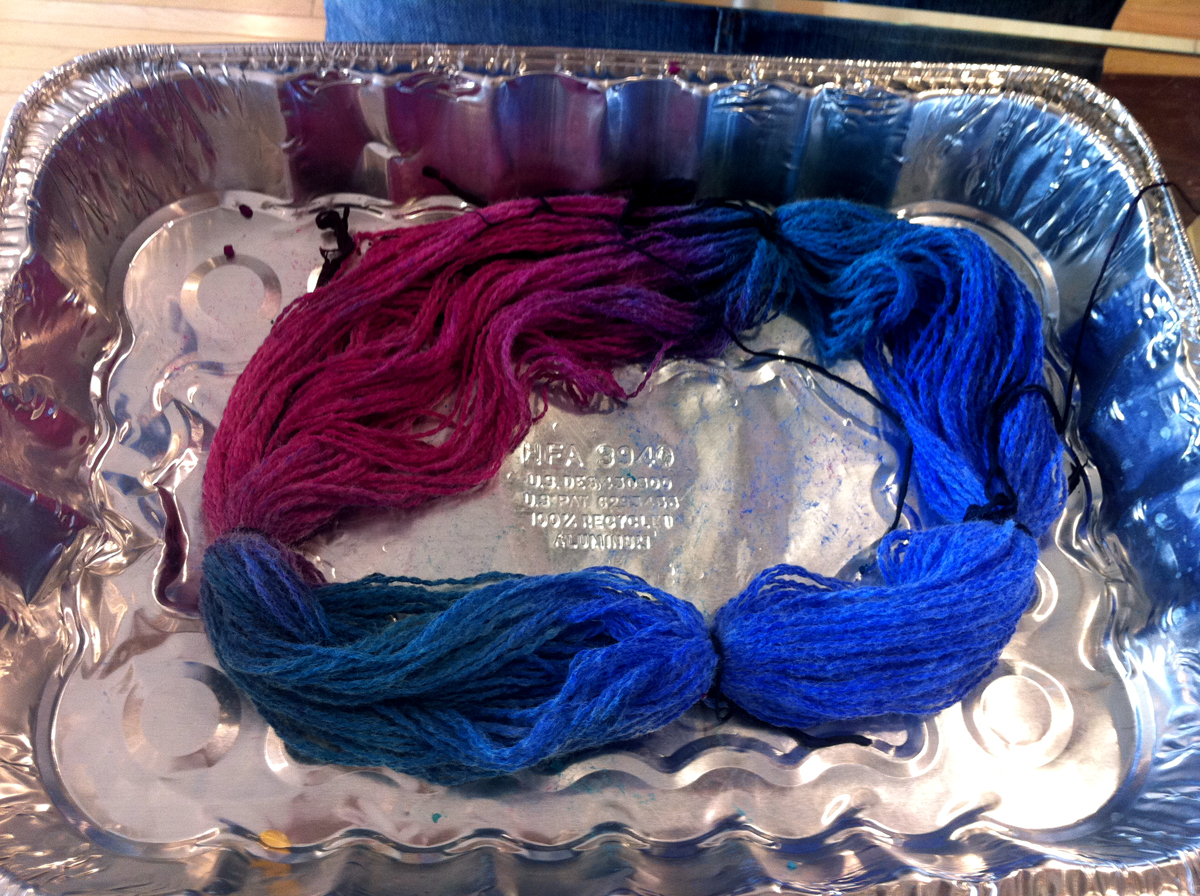
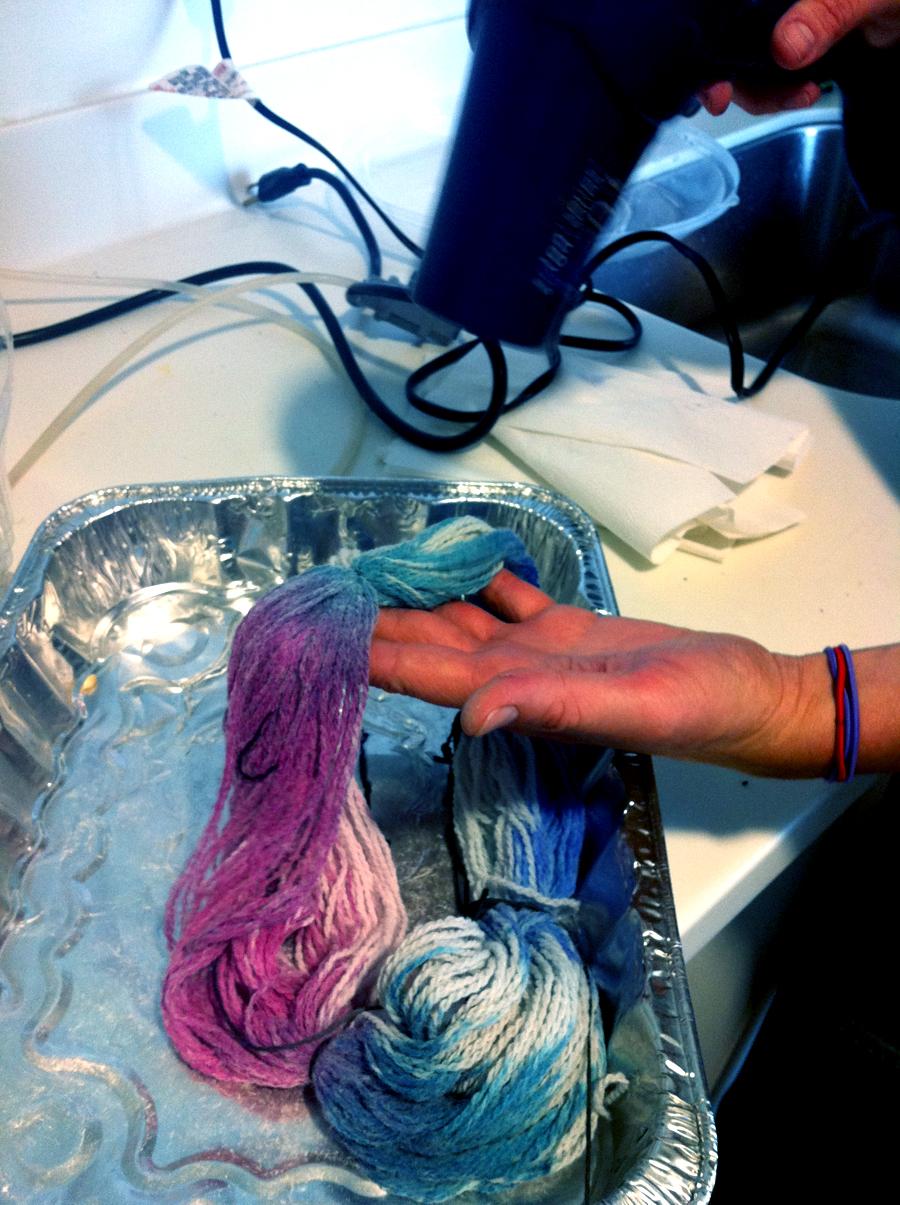
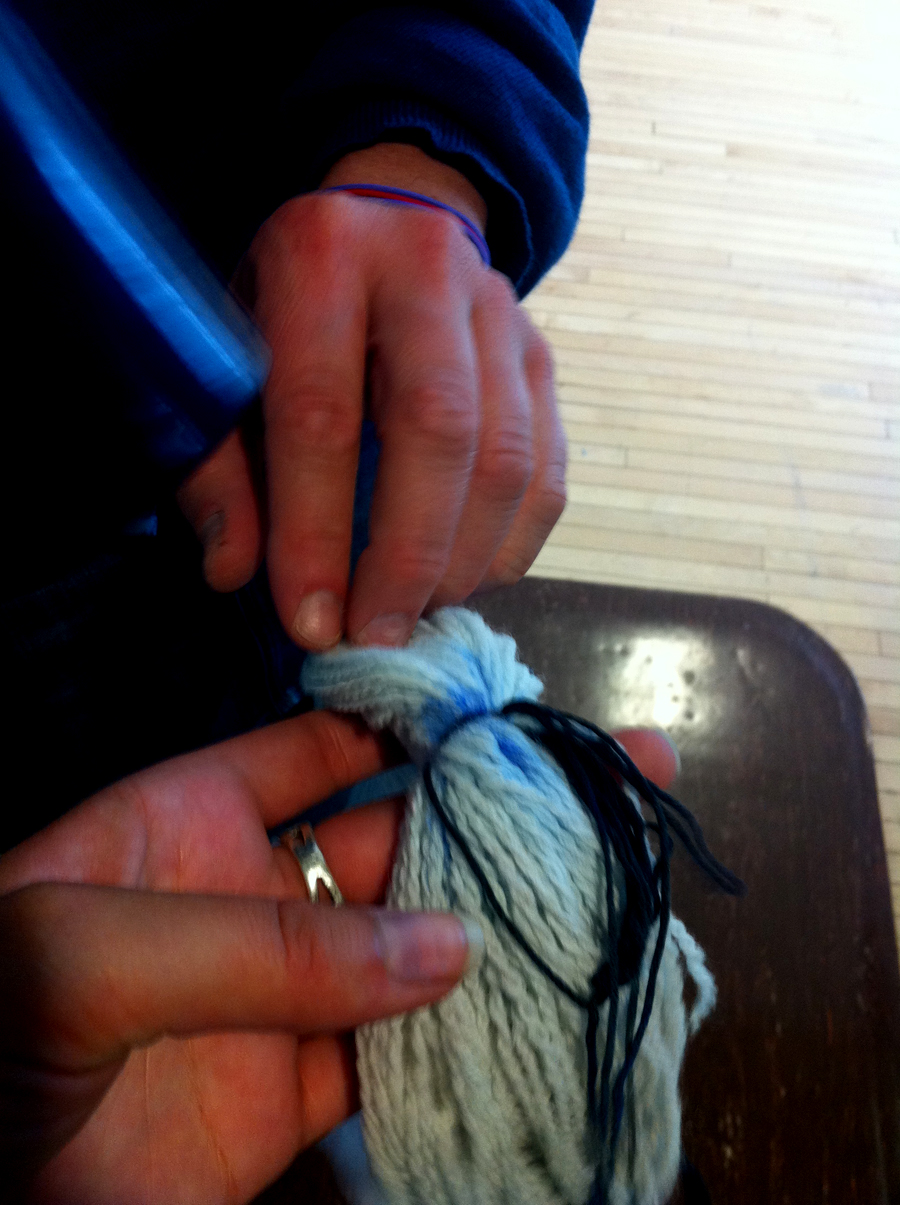
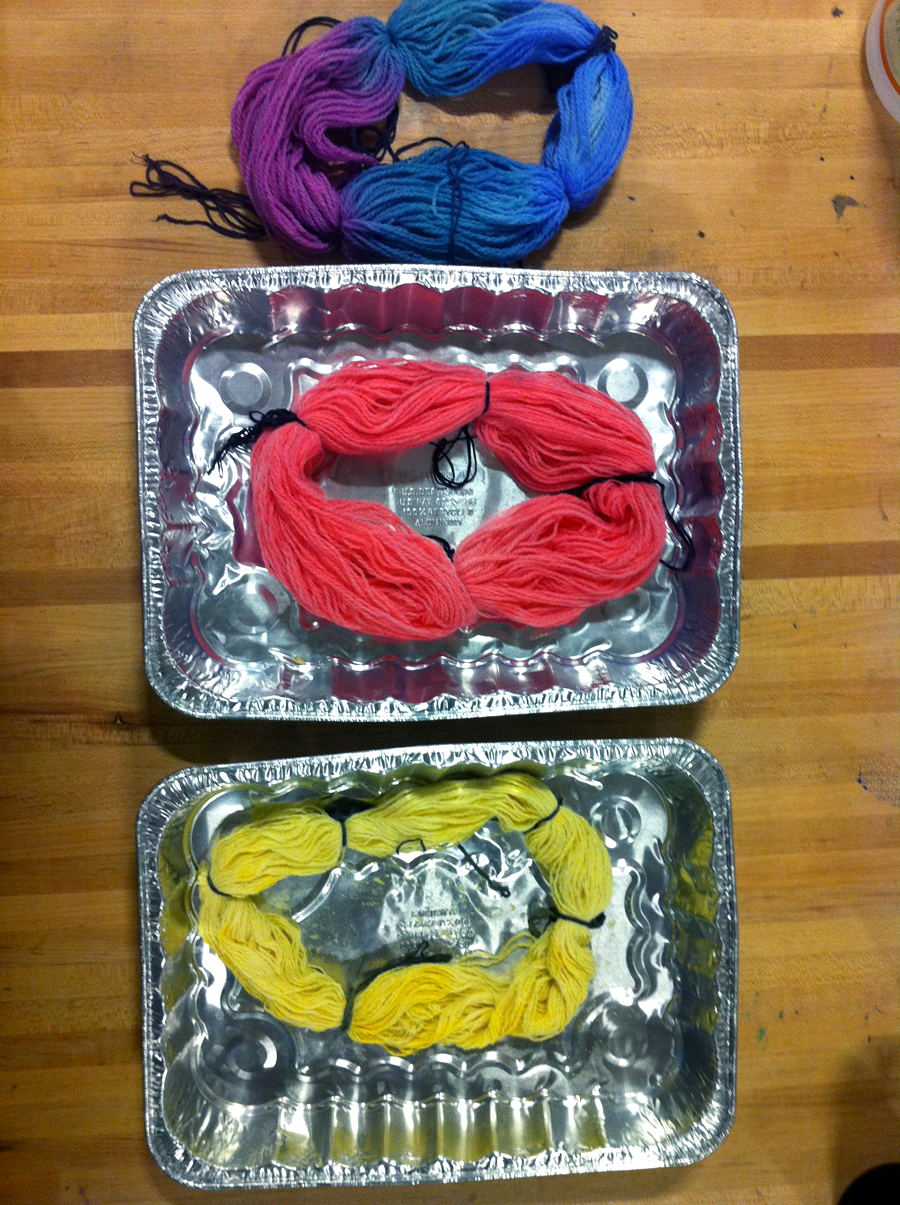
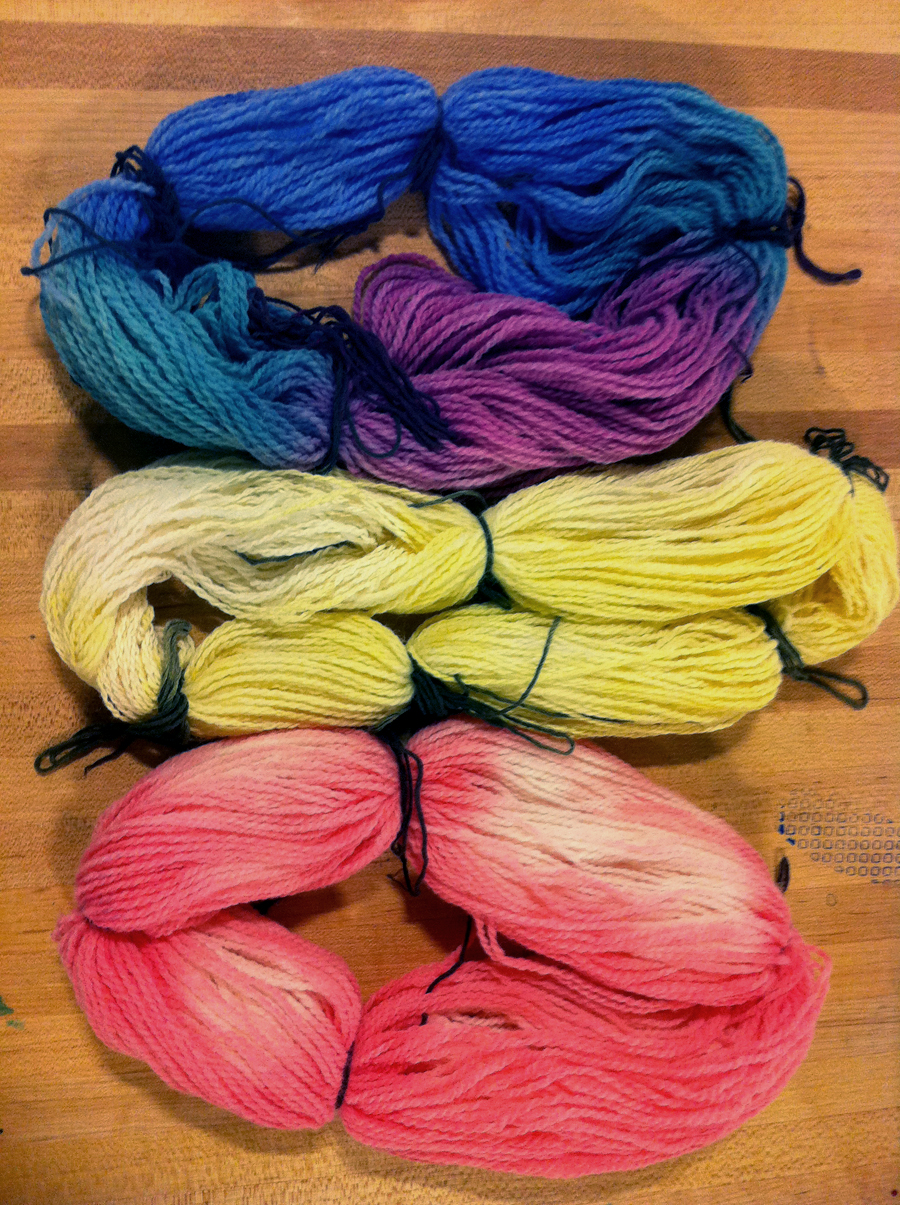
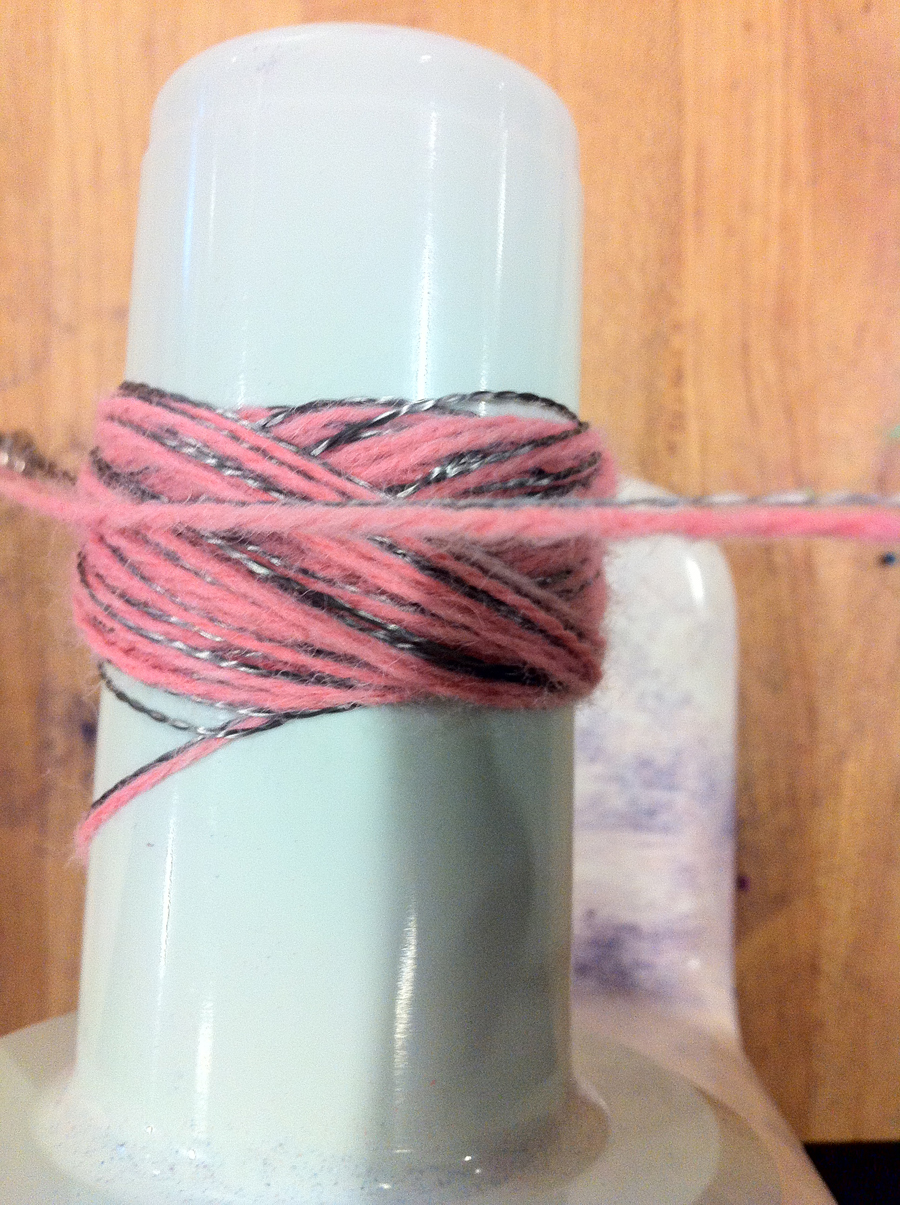


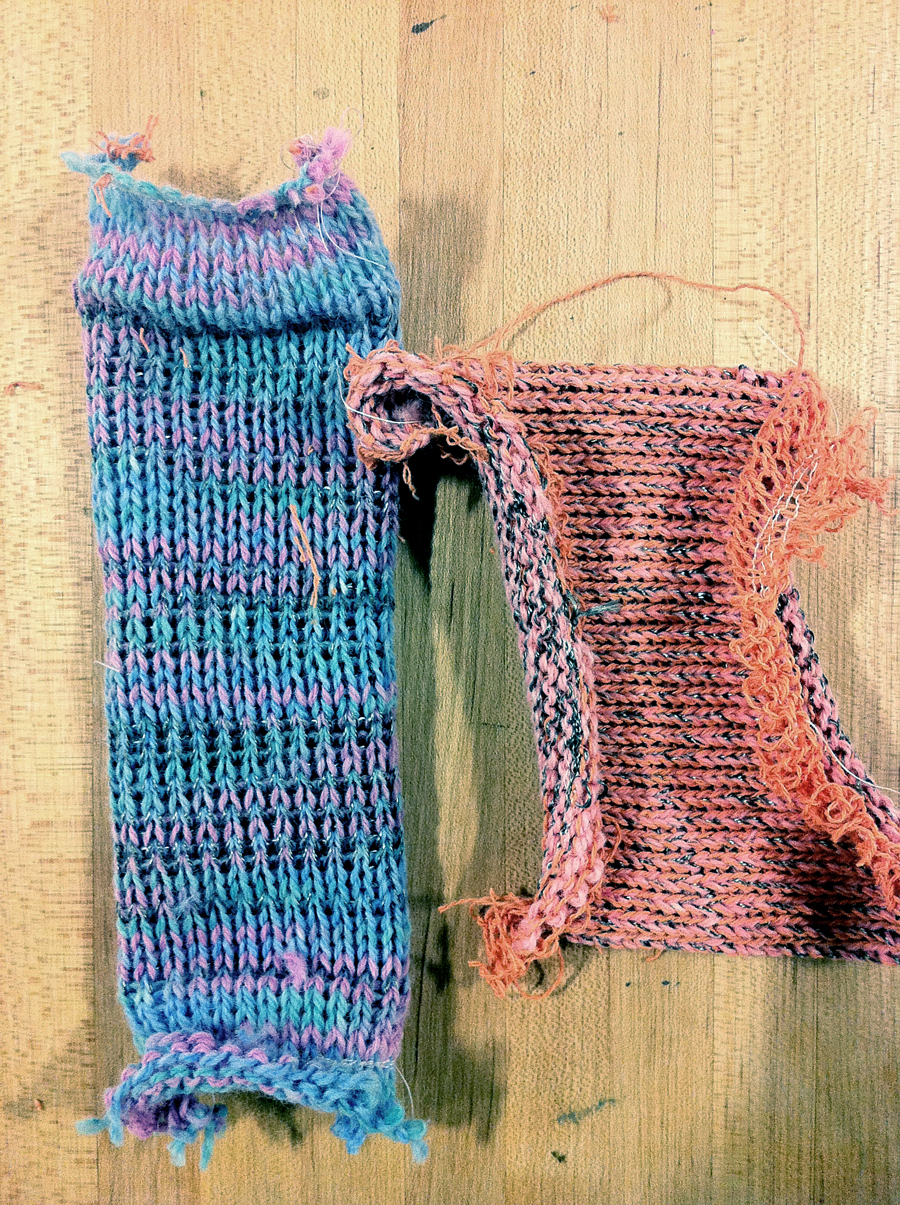
[...] Here is our previous experiments in this area. [...]